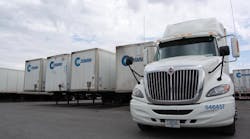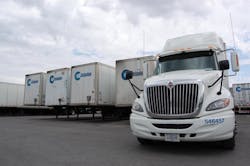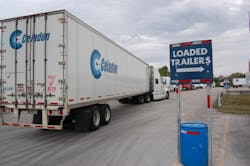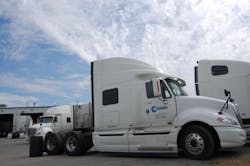In particular, Jonathan Kletzel, U.S. transportation and logistics advisory leader for PwC, noted that the pace of transportation deal making is exceptionally strong in the U.S., which is offsetting a drop off in such activity across the pond.
“Overall deal activity remained relatively stable in the third quarter of 2012 primarily because the dramatic decline in both deal volume and value in the Eurozone was effectively countered by a sharp increase in U.S. deals,” “Despite the relatively strong pace of deals, our optimism regarding future M&A activity in the sector is tempered by the ongoing existence of significant macroeconomic risk.”
According to PwC’s Intersections, a quarterly analysis of global deal activity in the transportation and logistics industry, some 37 transactions in excess of $50 million – representing a whopping $15.3 billion in total value – were closed in the third quarter of 2012, compared to 48 deals totaling $13.6 billion in the second quarter this year.
On a year-over-year basis, deal value and volume decreased from 50 transactions totaling $16.3 billion in the third quarter of 2011, but average deal value increased to $413 million from $284 million in the second quarter of 2012 and $325 million in the third quarter of 2011.The pace of mega deals, or deals with values of at least $1 billion, remains ahead of 2011, with four transactions in the third quarter of 2012 totaling $7.5 billion, according to PwC. Even as the global economy slows, the demand for the transportation infrastructure assets should further so called “mega deal” activity, the firm said.
Indeed, transportation infrastructure played a prominent role in the third quarter deal making, said Kletzel. “We expect infrastructure M&A to continue to lead the market, fueled by auctions under consideration in the U.S. and Philippines, and the European Investment Bank’s 2020 Projection Bond Initiative,” he said. “These factors, along with the overall challenge presented by transactions budget gaps, should lead to more infrastructure activity around the globe.”
Regionally, the U.S. remains in Kletzel’s words a “hotbed” of activity, representing 11 deals totaling $6.1 billion in the third quarter. According to PwC’s data, it’s possible that the pace of smaller U.S. deals could increase through the end of 2012 if there is an increase in the capital gains tax.
While local deals were popular in the European region with five deals totaling $1.5 billion, the weak euro may have contributed to net inbound deal flow and continued weakness in the currency could support future cross-regional deals targeting operators and assets in the region, according to PwC.
What does all of this mean for trucking? Well, I asked Tom Aronson with Monroe Capital a while back to give me a “view from the weeds” so to speak about what such deal making means for those operating big rigs for a living.“From what we’ve seen, there’s a lot of activity happening smaller markets,” he told me. “We haven’t really seen a significant falloff since the ‘Great Recession’ in deal making as there’s a focus on gaining entry into more localized and regional trucking business niches.”
In particular, Monroe has seen 50% of its transportation deal making this year revolve around the “fracking” industry for extracting natural gas and oil in many regions of the U.S.
“There’s a lot of opportunity for the regional and local [transportation] players to expand because niche businesses are very strong,” Aronson added. “Generally we’re seeing the most activity in the $15 million to $100 million-$150 million range as a variety of players try to diversify their portfolio of transportation services.”
Indeed, with growing uncertainty in the wind for trucking – you can read more about that by clicking here – acquiring and expanding upon a broader set of footholds in the freight market may not be such a bad idea.






